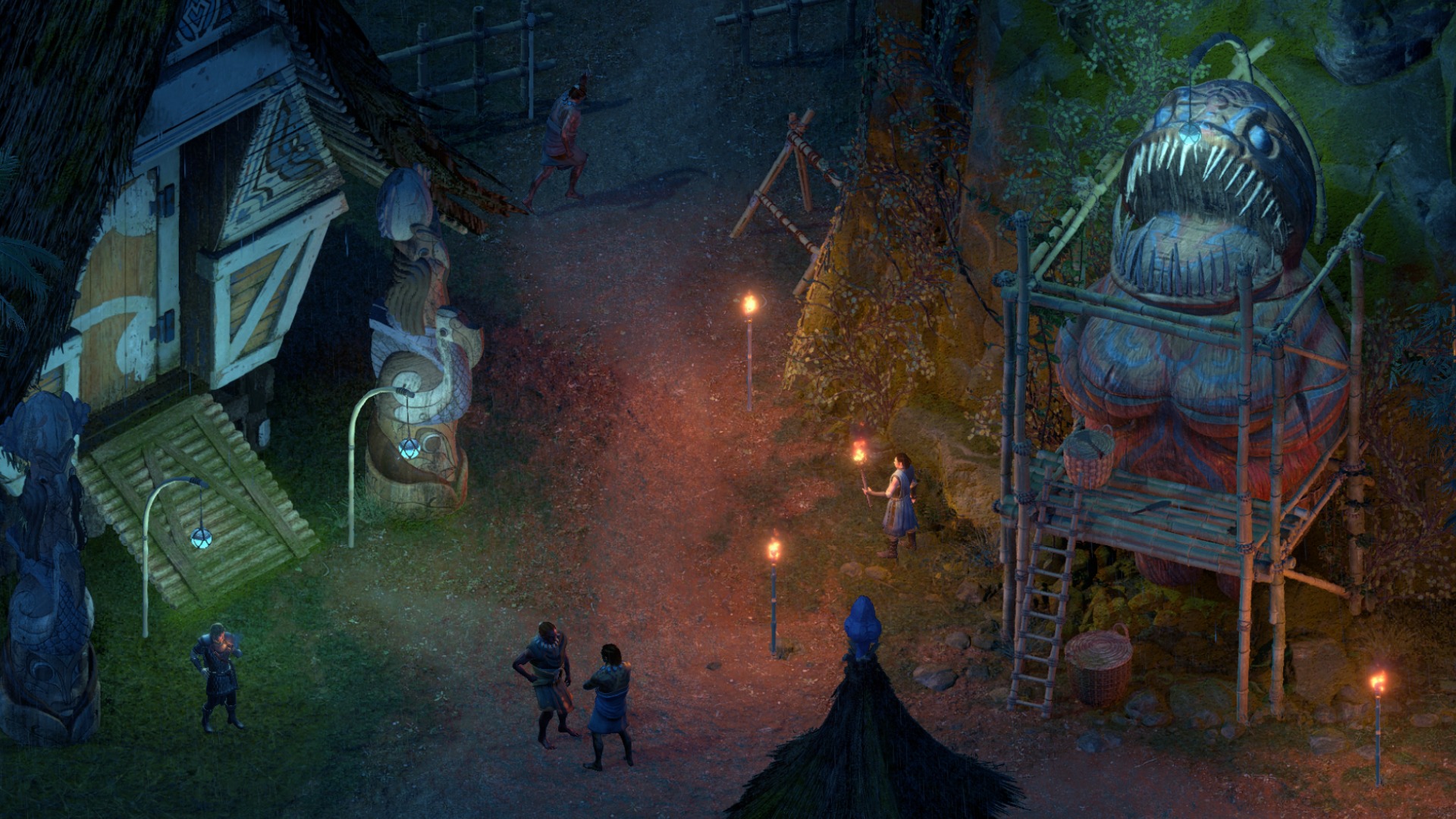One of the most anticipated RPGs has just sailed onto the scene and it’s already making a bit of a splash. The followup to 2015’s highly acclaimed Pillars of Eternity is now available on the PC with console versions arriving at a later date. In preparation for the game’s launch I had a chat with Katrina Garsten, producer for Pillars of Eternity II: Deadfire and host of many of the game’s Kickstarter update videos. Taking on multiple roles within the organisation, Katrina was a wealth of knowledge when it came to the game, it’s crowd-funding success, and insider scoops on the game’s development.

The isometric RPG has been available for over a week now and its receiving a very positive response from the players and critics. In fact, it currently sits as the 2nd best PC game of 2018, at least according to Metacritic. So fans of the genre certainly shouldn’t pass up this release.
For those unaware of the Pillars world and gameplay, nobody describes it better than Katrina herself:
“Pillars of Eternity II is a direct continuation from the first game, although you don’t really need to play the first one in order to understand the second one. We give you a little bit of background about what happened in the first game.”
“It is an RPG that plays very similar to… old infinity engine games like Baldur’s Gate or Icewind Dale… although we have modernised it now and have added a tonne of cool new features you wouldn’t find in those older games.”
Some of the features Katrina was referring to include a much needed update to the UI which fans of the genre will tell you is a massive barrier of entry to many of the old-school classics. A fresh coat of paint always helps but one of the biggest new additions to Pillars 2 comes in the form of voice acting. Before the game’s release Obsidian took to Twitter to announce that every line of dialogue within the game will be voice acted.
And now a word on how much VO was recorded for @WorldofEternity #Deadfire from Audio Director, Justin Bell. pic.twitter.com/mD1FR58hE1
— Obsidian #Deadfire (@Obsidian) April 13, 2018
As somebody who has played the old-school classics and even modern games from within the genre such as Torment: Tides of Numenera and Divinity Original Sin 2, I can safely say that voice acting is one of the best things you can do for your isometric RPG. Playing these games can unfortunately become tiresome simply due to reading fatigue and this is a problem Pillars 2 will not be facing.
In fact, when I talked to Katrina about other modern isometric RPGS such as the ones listed above, she mentioned that the team at Obsidian was closely watching the games coming out of InXile and Larian Studios.
“We’ve spent a lot of times playing those games as well because we love the genre too and we gather inspiration from them.”
The world and the lore of the Pillars universe is interesting to say the least. One of Obsidian’s big goals was to “make something brand new in a world nobody has ever heard of before”. It was important for the Pillars games to create something completely unique and distinguishable from all the games that came before it and all the games and worlds with which it drew inspiration.

Pillars of Eternity II focuses on the god Eothas who “inhabits a gigantic statue in the stronghold… it comes to life and he bursts out of the ground and starts sucking the souls out of people and goes on a rampage. It is your duty as a Watcher to track Eothas down and figure out why he is doing what he is doing and stop him.”
As a Watcher you possess the power to read people’s memories and see into their past lives. You are a powerful entity with the fate of the world lying on your shoulders. Taking place 5 years after the events of the first game, Pillars 2 really wants to give you the power to take on this gigantic threat in any way you see fit.
“There are a tonne of different options for you while you’re playing the game and it’s one thing that sets Pillars 2 apart from Pillars 1… The amount of choices you can make has been increased so much.”
Katrina wasn’t kidding when she made the above statement. The game really does want to feel like a game of Dungeons and Dragons transported into a video game medium. In fact, Pillars 2 has introduced Multiclassing and Subclassing into the mix which brings your character customisation to a whole new level. This essentially allows you to have a huge range of different approaches to the game with a ludicrous amount of class combinations on offer. There are “55 different Multiclassing combinations, but if you factor in Subclassing… the combinations are well over 1000.”

When comparing Pillars 2 with the original it’s difficult not to discuss the addition of ship management and combat. The game is played within the Deadfire archipelago and so naturally a large part of your journey involves moving from one island to another. Obsidian took this challenge head on and has included a string of new features that were never present in the original game. Most importantly, ship customisation, managing your shipmates, exploring the oceans, and getting in to some trouble with ship to ship combat.
The game also features factions and rivalries, something that will once again come in to play not only on dry land but whilst you’re sailing the mean seas as well.
“Each faction has there own beliefs and ideals and depending on which faction you side with, they have rivals, so its possible when your travelling through the Deadfire archipelago on your ship you can be attacked by a rival faction and their pirate party.”
—
Pillars of Eternity II: Deadfire is a huge release for a somewhat niche genre of games. It maintains the legacy set by the amazing isometric RPGs that came before it and adds its own personal twist to the formula, bringing something new at every corner. With a crowd-funding campaign that raises over $4.4 million, the game had a lot of work to do to live up to expectations. Although now that the game has released it’s obvious that those expectations were met. Get your ship mates together and crack open a bottle of rum, it’s time to set sail.










